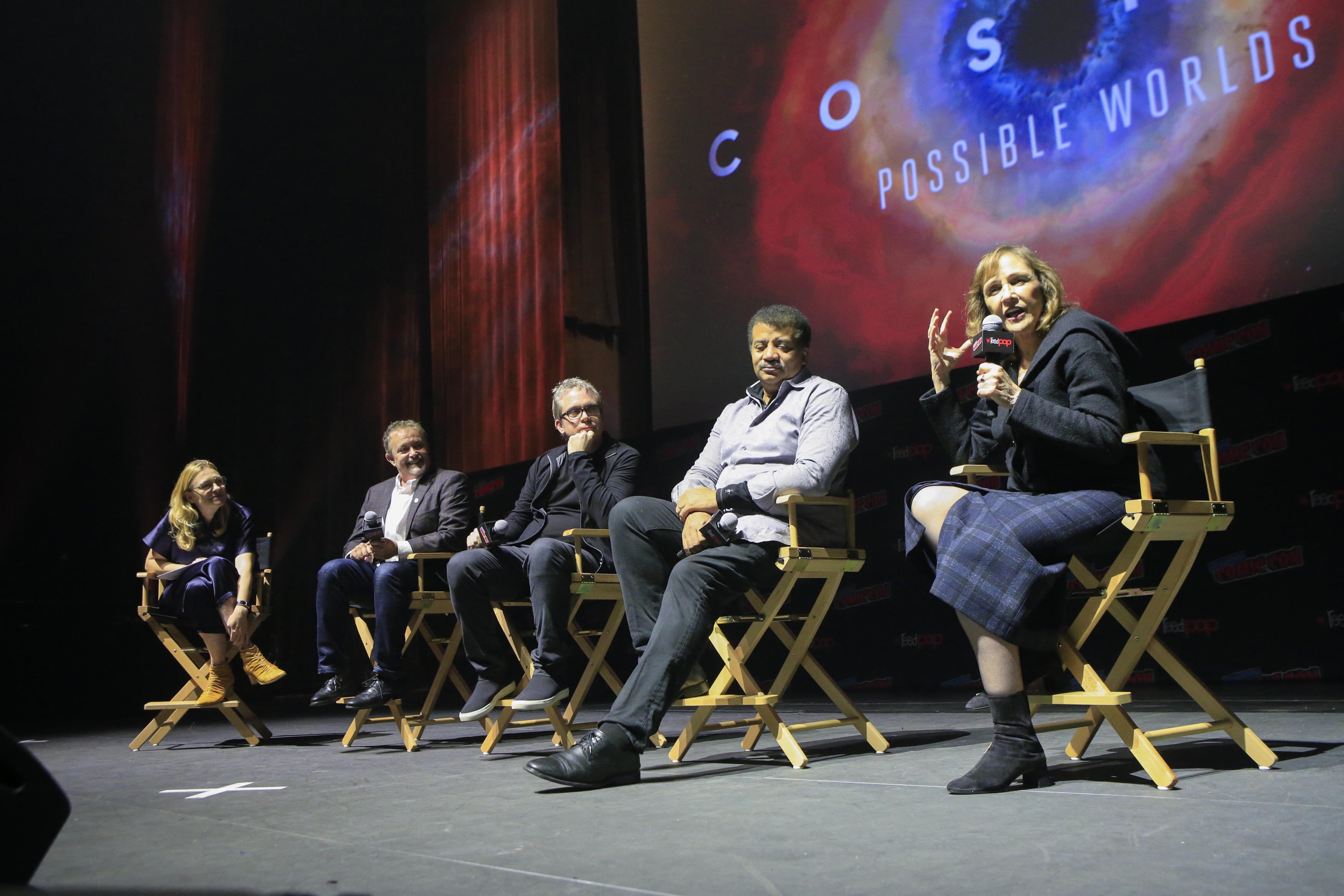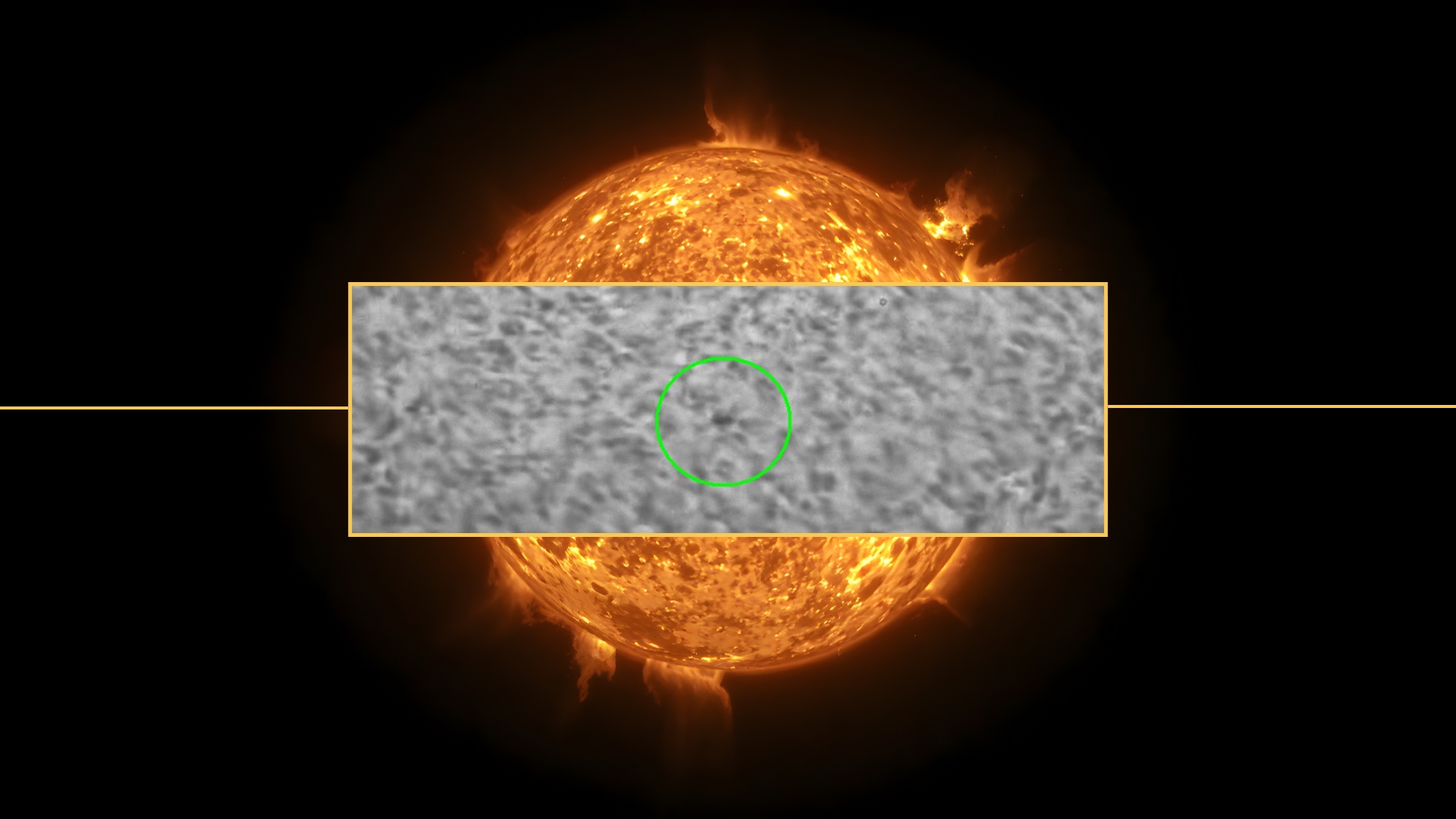'Cosmos: Possible Worlds' Creators Preview New TV Series at Comic Con
NEW YORK — "Cosmos: Possible Worlds," coming out in spring 2019, will be a TV voyage that takes viewers to distant planets, to potential futures on Earth, into the mind and into the quantum realm. And its creators want it to totally change the way you see the world.
At a panel and series of press roundtables at New York Comic Con Sunday (Oct. 7), Space.com got an inside view of what the show's creators have in store for the upcoming season, which comes five years after the first "Cosmos" season with Neil deGrasse Tyson as host, called "Cosmos: A Spacetime Odyssey," and just under 40 years after "Cosmos: A Personal Voyage," hosted and co-created by Carl Sagan in 1980. The new show will air on Fox in the U.S. and National Geographic internationally.
"This season's a little more speculative," Brannon Braga, an executive producer and director for the show, told Space.com during the roundtable. "Last season laid down some of the fundamentals; this time, we're going to go to exoplanets and we're going to go to possible futures for humanity … the future's a possible world, planets are a possible world, we'll do an episode about the brain, we'll do an episode about the unbelievable organism of the tree — we've never stopped really to understand what forests really are, which is a giant, alien organism." [Inside 'Cosmos': Q&A with Host Neil deGrasse Tyson]
"We're taking the audience down to the quantum realm, the strangest scale we know in the universe, and we really want to knock your socks off," he added.
During the series, Tyson takes viewers — by way of virtual spaceship — through these realms at the frontiers of science and technology. But he has a deeper goal than just showing off the coolest things the universe has to offer.
"If you think you don't connect to anything, then why should you believe that your conduct matters to others around you or your descendants?" Tyson said during the afternoon panel. "One of the running themes in all three 'Cosmoses' — the correct plural, [as opposed to] the pretentious 'Cosmi' — it's not just an intellectual epiphany, it's an emotional one. It's even a spiritual one. Where you realize, oh, my gosh, I'm connected to my fellow humans, to other life on Earth, to the rocks beneath my feet, to the flora beneath the soil."
"And once you understand that connectivity, you cannot continue to be the same person, because now you recognize explicitly that your actions influence the rest of the world," he added.
Breaking space news, the latest updates on rocket launches, skywatching events and more!
The common denominator between the older and newer incarnations of "Cosmos" is Ann Druyan, wife of the late Carl Sagan and co-creator of both series. Druyan underscored the importance of the material during the panel. "I think the concept that we most urgently need to cherish, to care about, is the one at the heart of science, which is that it matters what's true," she said to applause. "That you can't get to Mars, you can't cure smallpox, you can't do any of those things by lying your way. Nature will not be deceived."
One episode that seemed particularly resonant to the panelists presents two possible futures for a baby born in 2019 — one where humans take steps to lessen climate change and one where they don't. That episode and others fold in ideas on the very cutting edge of science, including many developments that actually happened in the five years between the previous season of "Cosmos" and this one.
"One thing that we discovered is, in the five years since the previous season, science and the discovery of possible worlds — whether that's exoplanets in the realm of the habitable zone or whether it's understanding how the brain works — has moved forward so much," Jason Clark, an executive producer on the show, said during the roundtable. And the technology for making a high-budget TV series advanced, too, he added — for instance, sweeping shots that required helicopters five years ago could now be accomplished with drones.
"We shot around the world, on multiple continents, multiple units," Clark added. "We started filming well over a year ago, and the time before that was the curation and creation of the stories."
During the research process for the season, Druyan and Braga describe finding incredible stories that they can't wait to share with an audience — such as the underground network of fungi, bacteria, plants and other animals, called the mycelial network, that dwells below 90 percent of Earth's plant matter. While it's cool to zoom to M-dwarf stars that might be able to host life around their planets (as the series does), some of the strangest worlds might lurk right beneath our feet.
"That's one of the possible worlds hidden from us that we hope to bring to life in the new series," Druyan said during the panel.
"There's [the world] inside a dog's brain, and there's the one inside your brain," she continued. "There's the largest living organism on Earth, which no one has ever heard of, which is as large as the nation of Greece. And I will not tell you where it is, because we want to hold some things back, but there's so many wonders of this world and of other worlds we've begun to discover. We have some stories to tell that I know you've never heard, and that I think will really be thrilling."
Email Sarah Lewin at slewin@space.com or follow her @SarahExplains. Follow us @Spacedotcom, Facebook and Google+. Original article on Space.com.

Sarah Lewin started writing for Space.com in June of 2015 as a Staff Writer and became Associate Editor in 2019 . Her work has been featured by Scientific American, IEEE Spectrum, Quanta Magazine, Wired, The Scientist, Science Friday and WGBH's Inside NOVA. Sarah has an MA from NYU's Science, Health and Environmental Reporting Program and an AB in mathematics from Brown University. When not writing, reading or thinking about space, Sarah enjoys musical theatre and mathematical papercraft. She is currently Assistant News Editor at Scientific American. You can follow her on Twitter @SarahExplains.

